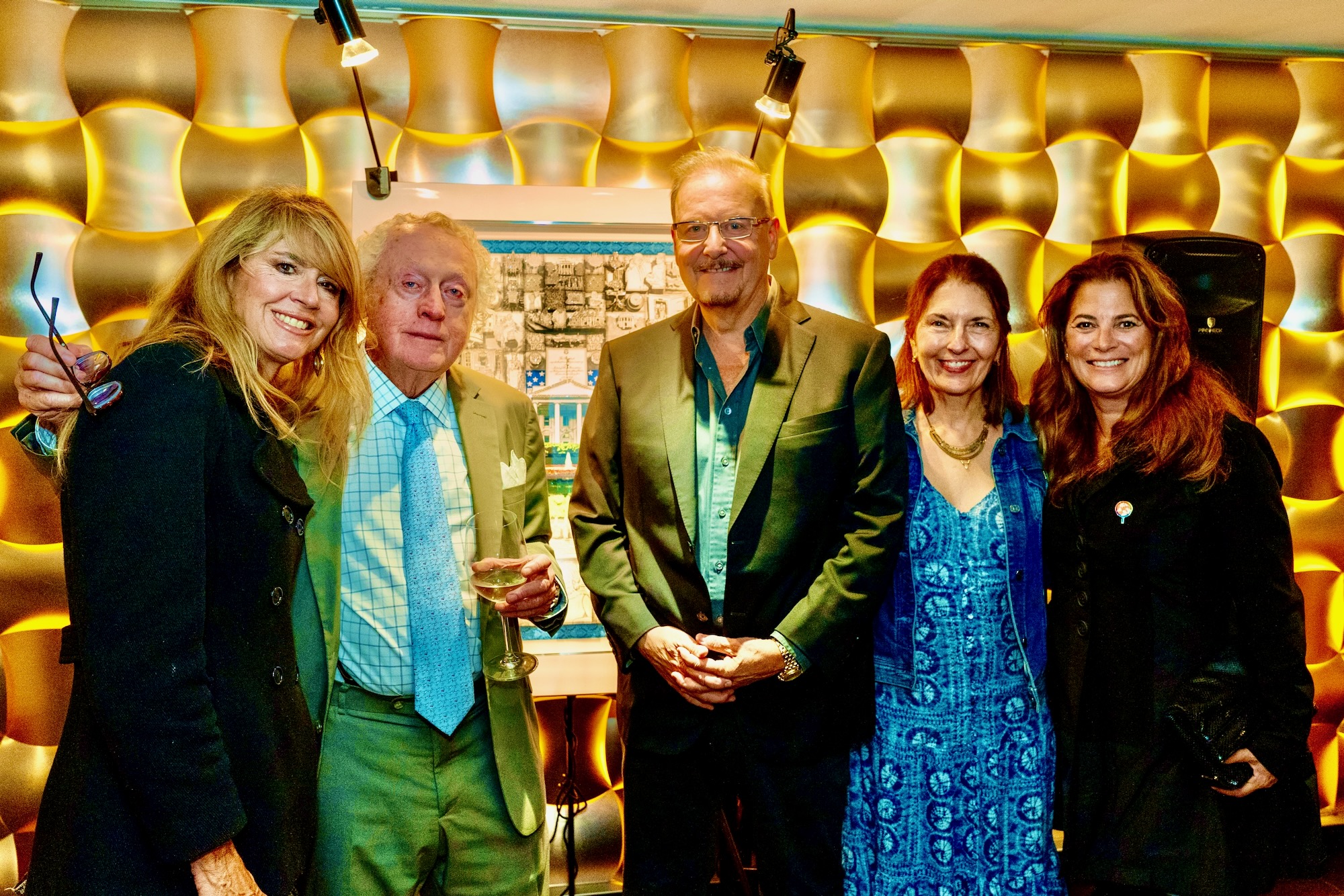3D Pop-Art Artist Charles Fazzino
The latest from Hollywood on the Potomac.

Written by guest contributor Isabela Sassoon
Editor’s note: “I’m excited to share the coverage of this event by our intern who has just completed her first piece as a budding journalist. It’s a fantastic opportunity to see her fresh perspective and enthusiasm for storytelling. I hope you enjoy her insights!”
The Event: Anita McBride, co- author of U.S. First Ladies and Board Member of the White House Historical Association, engaged in a Q&A with artist Charles Fazzino who was commissioned by the White House Historical Association to create a piece of artwork commemorating the opening of The People’s House: A White House Experience. The duo was introduced and the commissioned artwork unveiled by C-Span’s Howard Mortman.
As reported by Isabela Sassoon:
I was led up the stairs by a uniformed waitress to an open lounge and a closed party in The Wine Room of Cafe Milano in Georgetown. There were elegant champagne bottles, casual chatter among guests and servers weaving through guests carrying trays of hors d’oeuvres. A painting of the Pope hung colorfully against the wall perpendicular to the bar that read ‘ABSOLUTE,’ bearing significance as he was once entertained at the venue. Across the bar, to the opposite end of the room, was a golden eagle engraved into a grand golden mirror. In the middle of the room stands a camera atop a tripod. Facing the wall opposite the windows are chairs, microphones sitting on them, a black tarp for background, a convex, textured brassy-gold wall, and an easel covered in a tarp that could only be disguising one thing. Who was this all for? On a Wednesday night to do something this interesting, there really should be a reason, right? The White House Historical Association has announced the grand opening of a facility that serves as an educational experience for visitors to learn about the history of the White House’s residents and caretakers. Not only is this a big deal, but the purpose of the cocktail reception was to unveil a commissioned art piece by none other than Charles Fazzino, 3D pop-art artist.
I had the privilege of speaking to Charles Fazzino one on one. He is a confident and charismatic character. When he speaks, he uses a clear speaking voice and plenty of hand movements to communicate his ideas visually. He smiles and seems easy going before you think about the precision and time he spends on his works; his demeanor shifting in my mind to that of a seasoned professional who’s there to see friends, appreciate his art and work on the side.
During the interview, I questioned him about his creative process. “Well, I was a mad doodler when I was young, so when I have to sit down, that’s what it starts off with. Just a regular sketch. Then I get a finished colored design. Then I take it into Photoshop. It gets printed. Then I send it to Los Angeles because I do my printing there—the old fashioned way on printing presses. And then in-house we do digital printing. So I do both. It goes from making a print to cutting out those prints.” It’s commonly said that Rome wasn’t built in a day, and that applies to Fazzino’s beginning in his trade. He stated, “And then I have today, I don’t know, around over 50 people working for me and my studio. 50 artists that do all the cutting by hand with a knife. And when I first started, my wife and I did everything by hand by ourselves, in the eighties. And then through the years, I started hiring people to help me because so many galleries loved the work and I kept [farming] that out to helpers to help me. So today we have a big staff to produce all this artwork.”
My first question: I asked him about his use of apple imagery in his work. My question was chiefly about what made him specifically place an illustrated New York City in an apple big enough to encompass it. I wanted to know if there was anything important about it, and if not (might just be the illustrated literalism of the common phrase “the Big Apple” in reference to Manhattan), then does that place importance in something else? “Well, I’m from New York. I was born in the Bronx and the apple has sort of become my identity. So my artwork is well known in New York City. I did the airport at JFK American Airlines. Millions of people see that. And I did both versions of scenes of the big apple, in different areas of the airport. It’s taken on a life of its own. So when I draw something of New York, I always draw an apple. And when I’m doing signings at shows, even if I’m out of the country working, everyone always asks me to draw an apple. So the apple’s become sort of an identity. For me, my work is narrative and it tells a story, and the apple is part of that.”
His first question for me is genius, “The interesting thing is, do you know how New York got the name of the big apple?” I have no idea. Momentarily, I feel defeated that I never thought to ask that; a story so central to the identity of New York City would surely be common knowledge, right? What I find important is how he transitioned into emphasizing the origin of the apple. The origin of something is when it’s thrust into existence. To acknowledge the origin of something is not only to acknowledge its existence but also the identity and past experience of the subject; this case being Fazzino’s apple. “So, back in the 1930s, there was a dance in Harlem and all the musicians from all over the country wanted to hear this new music that was going on. There was a dance being danced in Harlem called the Big Apple Dance, and musicians then would go back to their own states and say, ‘oh, I was in New York at the Big Apple,’ and they keep using the words the big apple. So, New York became known as the Big Apple. Wow. Yeah. And then in the 1970s, there was a campaign in New York about ‘I love New York’ and instead of using the heart, they were using the apple. The Apple then became New York, and then I’ve been drawing New York. So every piece of artwork that I have depicting New York, has the apple in some way whether it’s drawn inside the apple or outside the apple.” I find it particular that Fazzino specifically clarified the apple’s placement towards the end of this statement. It’s not that the apple’s location or whatever else matters – it could be an outline – but the story of the Big Apple exists, so Fazzino’s artwork reflects that.
Read more here.





